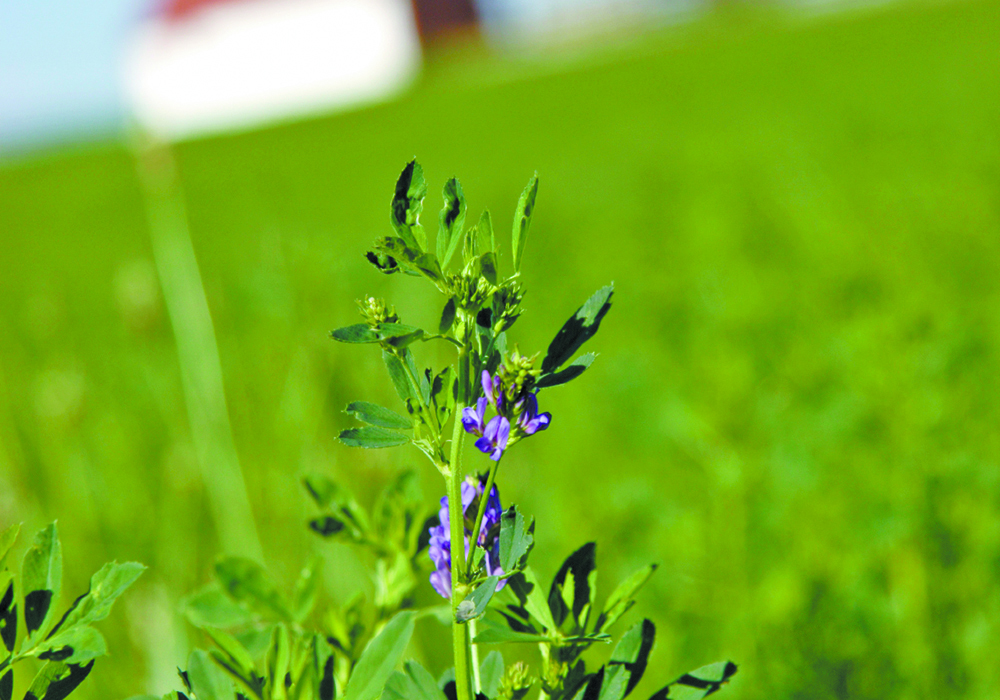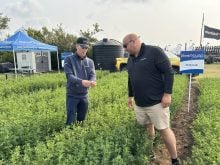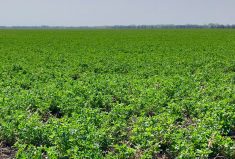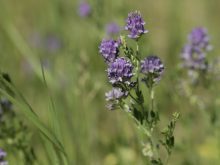Every spring in Canada, there’s a battle for acres between canola, wheat, barley, pulses, oats and other crops.
Depending on the year and relative prices, one crop may gain some acres one year and then lose the next.
But one crop has been consistently losing the acreage battle over the last decade or so.
In 2011, Canadian farmers grew about 11.2 million acres of alfalfa.
In 2021, based on Statistics Canada’s Census of Agriculture data, Canadian farms had 7.5 million acres of alfalfa. That’s a drop of about 33 percent in 10 years.
Read Also
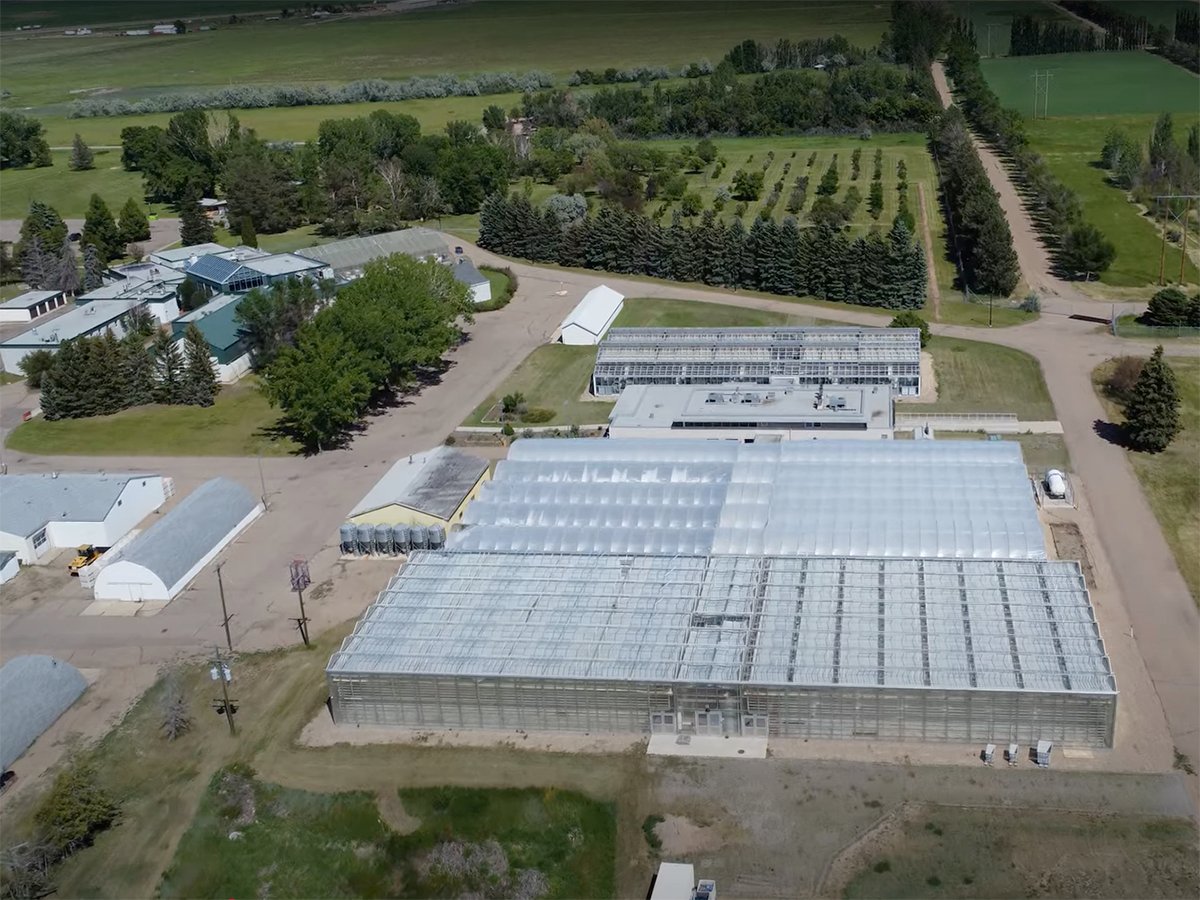
Alberta crop diversification centres receive funding
$5.2 million of provincial funding pumped into crop diversity research centres
As well, the number of farms with alfalfa has collapsed. Using the census data:
- In 2011, 75,000 farms reported growing alfalfa.
- In 2021, 51,000 grew alfalfa, a decline of 32 percent.
The drop in alfalfa acres isn’t hard to explain, said Jordan Van Hierden of Green Prairie International, a Lethbridge company that processes alfalfa and timothy hay for export.
Farmers are choosing to grow canola and other annual crops instead of alfalfa.
“The commodity (grain) prices are driving the alfalfa acres down. It’s just too easy to make money on commodity (crops),” said Van Hierden, who spoke to The Western Producer while on a business trip to the Netherlands.
“When you can lock your canola in for what (price) you can today, it’s a no brainer.”
Green Prairie International could export more alfalfa to countries like Japan, China and South Korea, but it can’t convince enough farmers to grow it.
“That’s the biggest thing we’re up against right now on our forage acres, is competing against commodities,” he said. “The export market is huge. We could ship hundreds of thousands of tonnes if we could get our hands on it. It’s got to be reasonably consistent quality.”
About 1,100 kilometres to the east, Lawrence Knockaert has also noticed that alfalfa is losing acres to annual crops. Knockaert, a dairy farmer from Bruxelles, Man., said more dairy farmers are feeding corn to their cows instead of alfalfa.
“There’s a big push to grow corn because of the tonnage per acre you can get off a field of corn,” he said. “Guys are growing it themselves…. (If you) get 20 tonnes per acre off of a field of corn, it fills up the bunk.”
The additional tonnage from a smaller amount of land offers an economic benefit for growers. It frees up land to plant other crops, like canola and soybeans.
“Then they can (grow) more cash crops,” Knockaert said.
On his farm, Knockaert doesn’t grow corn. He produces alfalfa and alfalfa-grass mixes for his dairy cattle.
“For dairy, it’s by far the best feed for cattle,” he said. “Alfalfa is a very good feed for protein. You can almost get away with very little protein supplement, if you’re feeding top notch alfalfa…. You wouldn’t want to feed 100 percent corn to your cows. There’s always going to be alfalfa in the mix, I would think.”
Outside of the dairy sector, dozens of beef producers in Western Canada are experimenting with corn grazing. The acres aren’t huge yet, but cattle producers are thinking more about corn because they can produce more biomass on less land.
“It’s not going to go away. The adoption rate is ramping up every winter,” Bart Lardner, a University of Saskatchewan beef scientist, said in 2019.
Alfalfa acres in Canada sank to 7.5 million last year, but it’s unclear if that’s the bottom. It’s possible that alfalfa acres could rebound if fertilizer and crop input prices remain high because it’s “cheap to plant and cheap to grow,” Van Hierden said.
“And it’s great for your crop rotation.”
Alfalfa offers multiple benefits for soil health, such as reducing erosion, fixing carbon and returning nutrients to the soil.
In 2021 the federal government invested $2.6 million to support projects that could improve alfalfa’s winter survivability, enhance its yield and nutrition value and develop a carbon offset system for forage crops.
Alfalfa, though, will probably need a much larger investment to compete with a crop like corn. Every year, private companies spend hundreds of millions (likely billions) on corn research and development around the globe.
About a decade ago, Monsanto announced an investment of $100 million to design corn hybrids suitable for Western Canada. The company (now owned by Bayer) set a target of eight to 10 million corn acres on the Prairies by 2025.
That isn’t going to happen, but with more corn grazing, more corn for dairy cattle and corn’s biomass per acre advantage, it’s possible that corn will continue to steal acres from alfalfa and other forage crops.


